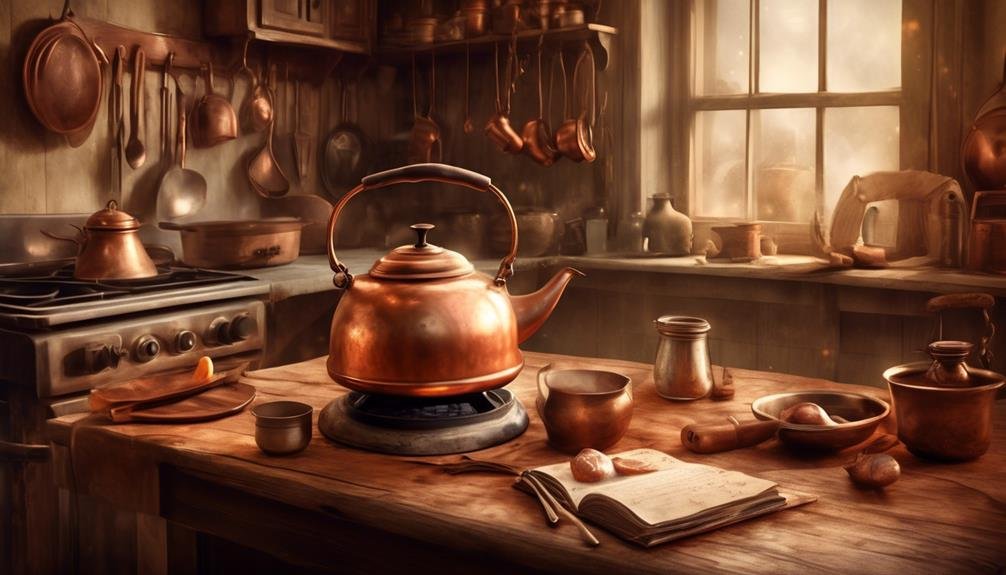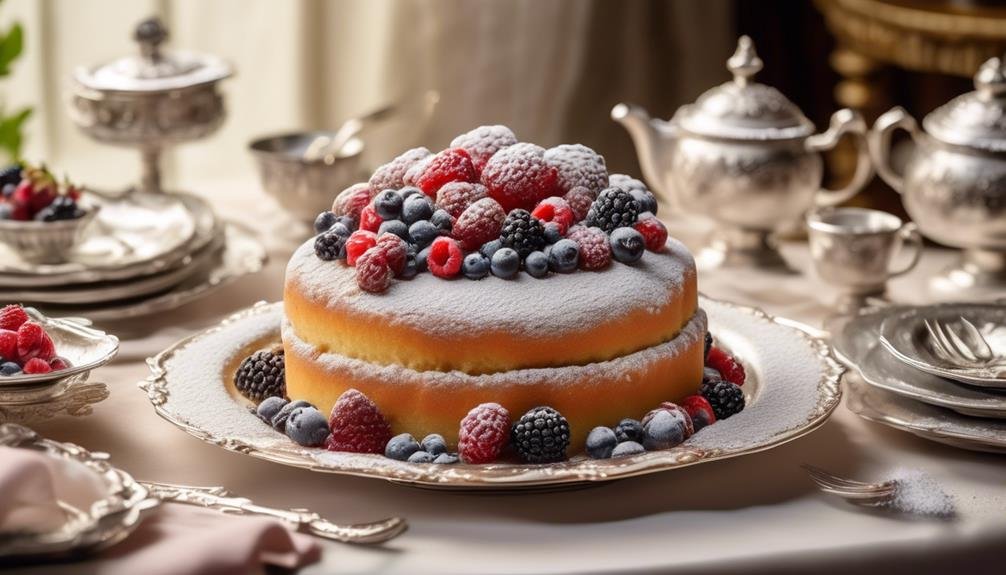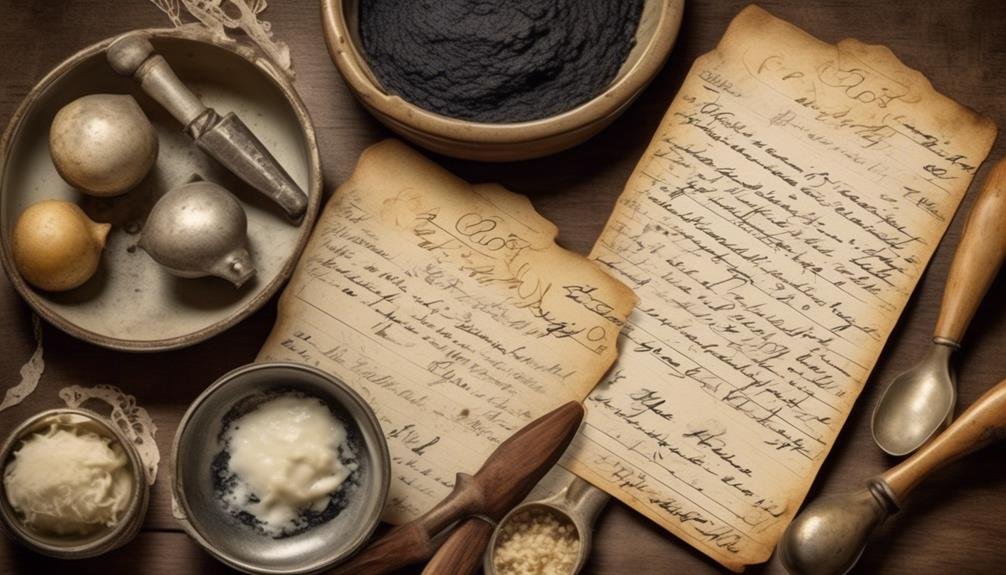Recipes From the 1800s

Curious about what people were cooking and eating in the 1800s? Have you ever wondered how our ancestors prepared their meals without the modern conveniences we have today?
The culinary practices of the 19th century offer a window into a world where ingredients were limited, techniques were different, and flavors were unique. Exploring these recipes not only provides insight into the food of the past, but also offers a chance to uncover forgotten flavors and cooking methods that could inspire your own kitchen endeavors today.
Notable 1800s Baked Goods
Notable 1800s Baked Goods brought a rich tapestry of flavors and histories to the tables of American families, reflecting the diverse cultural influences and historical events of the era.
In New England, the Election Cake stood as a symbol of the evolving political landscape. Originally baked for British soldiers in the American colonies, it later became a celebration of citizens' right to vote. The Election Cake held a place of honor on many tables, symbolizing the democratic spirit of the time.
Amelia Simmons, an American orphan, contributed significantly to the 1800s culinary landscape with her pioneering American cookbook. This work featured the delicate and flavorful Southern Tea Cake, a simple yet beloved treat that was widely embraced, especially by the newly-freed African Americans.
During the Civil War, baking soda, brown sugar, and cups of flour were precious commodities. In the midst of scarcity, the Amish Oatmeal Pie emerged, providing a solution to the shortage of traditional pie ingredients. Its use of oats instead of nuts and dried fruit offered a similar flavor profile to pecan pie, ensuring a taste of familiarity during challenging times.
These baked goods not only provided sustenance but also wove a narrative of resilience and adaptation through their ingredients and historical significance.
Hearty 1800s Main Dishes
Hearty 1800s Main Dishes continued to reflect the resilience and ingenuity of American cooks, adapting to the challenges and scarcities of the era while satisfying the appetites of families across the nation.
During the 1800s, recipes for main dishes often called for simple, staple ingredients such as brown and white flour, pork or bacon, and baking powder. These dishes weren't only hearty but also practical, making use of what was readily available.
Some notable main dishes from the 1800s included:
- Election Cake: Originally made for soldiers in the British-controlled American colonies, this substantial cake became known as such after the US won independence. It was often prepared with dried fruits, spices, and spirits.
- Civil War Mac & Cheese: Initially unfamiliar to Americans, this dish became a staple. A simple recipe from the Civil War era has been adapted for modern kitchens, featuring cheese, milk, and macaroni.
- Sally Lunn Rolls: These originated in France or England and were George Washington's favorite breakfast treat. They were made with yeast, flour, and butter, creating a hearty and flavorful bread.
- Shoo Fly Pie: Created by the Amish of Pennsylvania after the Civil War, this pie was made with molasses and boasted a sweet, rich flavor.
These dishes exemplified the resourcefulness of 1800s cooks in creating satisfying and hearty meals with the ingredients at hand.
Classic 1800s Desserts

Classic 1800s Desserts embodied the essence of indulgence and tradition, offering a sweet conclusion to hearty meals and a glimpse into the culinary history of the era.
One of the most iconic desserts from the 1800s is Election Cake. Originally made for British soldiers, it gained popularity as a celebratory dessert after the US won independence.
Shoo Fly Pie, a dark, sweet, and tangy dessert made with molasses, was created by the Amish of Pennsylvania after the Civil War.
Another classic dessert, Sally Lunn Rolls, with a delicate interior and golden crust, were brought to the New World by colonists and were George Washington's favorite breakfast treat.
Amish Oatmeal Pie, developed during the Civil War, used oats instead of nuts and dried fruit, offering a similar flavor profile to pecan pie.
Lastly, Southern Tea Cake Cookies, with a cake-like interior and flavors of vanilla and nutmeg, were widely enjoyed among newly-freed African Americans and are traditional at Juneteenth celebrations.
These desserts truly represent the good old-fashioned, classic sweets that have stood the test of time.
Regional 1800s Specialties
With the rich tapestry of classic 1800s desserts still lingering, let's now uncover the diverse and enticing array of Regional 1800s Specialties that emerged from different cultures and regions during this historical period.
- Election Cake: Originally made for soldiers in the British-controlled American colonies, it became known as election cake after the US won independence, celebrating citizens' right to vote.
- Sally Lunn Rolls: These famous rolls with a delicate interior and golden crust originated in France or England, brought to the New World by colonists, and were George Washington's favorite breakfast treat.
- Shoo Fly Pie: Made with molasses, specifically Shoe Fly brand, this pie has a dark color with sweet, tangy, and spicy flavor, and was created by the Amish of Pennsylvania after the Civil War.
- Southern Tea Cake Cookies: This simple and tasty recipe spread widely among newly-freed African Americans, with a cake-like interior and vanilla and nutmeg flavor, traditional at Juneteenth celebrations.
These regional 1800s specialties reflect the cultural diversity and historical context of the time, each with its own unique story and significance.
The recipes from the 1800s provide a glimpse into the regional culinary heritage, offering a window into the flavors and traditions of the past.
Forgotten 1800s Recipes

During the 1800s, a multitude of delectable recipes emerged, some of which have been forgotten over time but deserve to be rediscovered for their historical significance and unique flavors.
One forgotten recipe from this era is the New England Spider Cake. To make this delicious treat, you'd first mix together 2 cups of flour, 1 cup of sugar, 1 teaspoon of baking soda, and a pinch of salt in a separate bowl. Then, you'd add in 1 cup of buttermilk and enough milk to make a thin batter.
Next, you'd pour the batter into a hot, greased spider or skillet and bake it in a quick oven.
Another forgotten recipe is the Lemon Pudding, a delightful dessert that was enjoyed during the 1800s. To make this pudding, you'd mix the juice and grated rind of 1 lemon, 1 cup of sugar, 1 tablespoon of melted butter, and 1 cup of cold water. Then, you'd add 3 tablespoons of flour mixed with enough milk to make a smooth batter.
After pouring the mixture into a baking dish, you'd set it in a pan of hot water and bake it on a low heat until set.
These forgotten recipes provide a glimpse into the culinary traditions of the 1800s and deserve to be brought back to life in modern kitchens.
Frequently Asked Questions
What Were Popular Dishes in the 1800s?
In the 1800s, traditional recipes evolved with regional variations and cultural influences. Cooking techniques and historical ingredients shaped popular dishes, leading to modern adaptations and culinary evolution. The era's culinary landscape reflects a rich historical tapestry.
What Food Was Cooked in the 1800s?
In the 1800s, daily meals were influenced by regional specialties and culinary traditions. Ingredient availability and preservation techniques shaped cooking methods. The era saw a blend of culinary techniques, resulting in diverse and flavorful dishes.
What Did 1800 People Eat?
You ate simple daily meals, using cooking methods like baking, boiling, and roasting. Staple foods included bread, potatoes, and salted meats. Regional specialties varied, influenced by cultural traditions and seasonal ingredients. Food preservation was crucial for survival.
What Desserts Did People Eat in the 1800s?
Back in the 1800s, people indulged in traditional sweets like Election Cake, Shoo Fly Pie, Sally Lunn Rolls, Amish Oatmeal Pie, and Southern Tea Cake Cookies. Sugar consumption was high, and historical baking produced vintage confections, retro desserts, and classic treats.
Leave a Reply

Related Posts